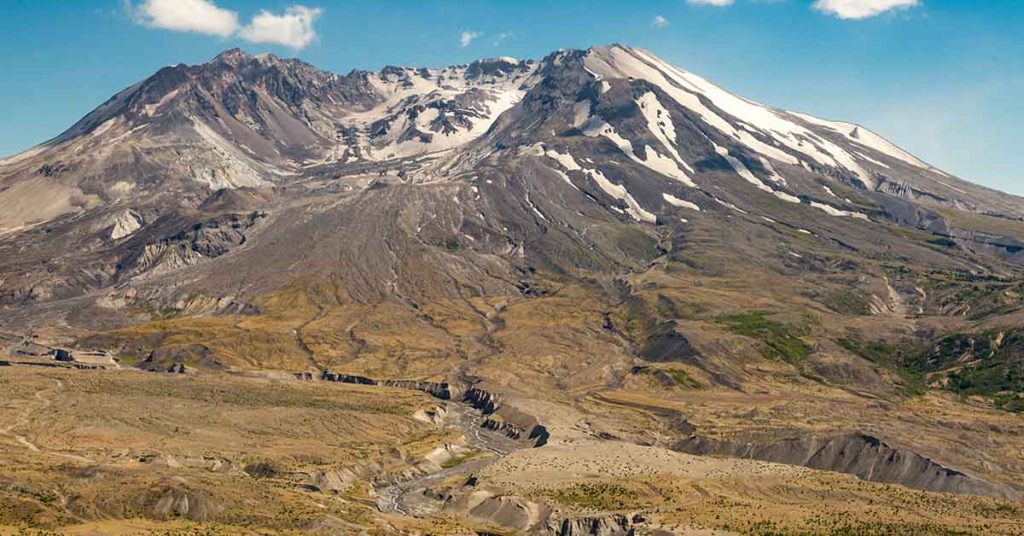The haunting image of volcanologist David A. Johnston, sitting calmly on a deck chair and smiling before disaster struck, encapsulates the devastating power of nature. This article delves into the tragic story behind this photo and the catastrophic eruption of Mount St. Helens in 1980, highlighting Johnston’s dedication and the unpredictable nature of volcanic activity.
The Man Behind the Smile: David A. Johnston

David A. Johnston was a dedicated volcanologist who had been fascinated by volcanoes since childhood. After graduating with high honors in geology, Johnston’s work took him from studying volcanic rocks in Michigan to active volcanoes in Alaska. By the time Mount St. Helens began showing signs of activity in 1980, Johnston was well-versed in the dangers of explosive volcanism.1 His work with the U.S. Geological Survey (USGS) had made him a leading expert on volcanic gases and their role in eruptions.
The Dormant Giant Awakens: Mount St. Helens in 1980

Mount St. Helens had been dormant for over a century before it began rumbling back to life in March 1980. Earthquakes, steam eruptions, and visible bulges on the mountain’s north face indicated that magma was on the move beneath the surface.2 These warning signs prompted authorities to restrict access to the area, a decision heavily influenced by Johnston’s insistence on the potential dangers posed by the volcano.
A Safe Distance? Johnston’s Observation Post

Despite the precautions, Johnston and his colleagues continued to monitor the volcano from what was considered a relatively safe distance—six miles away at the Coldwater II observation post. Johnston, with his deep understanding of volcanic hazards, knew the risks but believed that accurate hazard assessments required being close to the action. His dedication to public safety was evident as he worked tirelessly to prevent the reopening of restricted areas, which ultimately saved many lives.
The Final Moments: “This is It!“

On the morning of May 18, 1980, the unthinkable happened. A 5.1 magnitude earthquake triggered a massive landslide on the north face of Mount St. Helens, followed by a deadly lateral blast that devastated everything in its path. Johnston, witnessing the eruption unfold, managed to radio a final, chilling message: “Vancouver, Vancouver! This is it!” Tragically, that transmission would be his last.
The Aftermath: The Search for Johnston

In the chaotic aftermath of the eruption, search teams scoured the area for Johnston and the Coldwater II observation post. The force of the blast had obliterated everything in its path, leaving little hope of finding survivors. Years later, fragments of Johnston’s equipment were recovered, but his remains were never found. The area where he made his last stand was later renamed Johnston Ridge in his honor, a tribute to his sacrifice and contributions to volcanic science.
Legacy of a Hero: Johnston’s Impact on Volcanology

Johnston’s work at Mount St. Helens has had a lasting impact on the field of volcanology and public safety. His warnings and the measures he advocated for undoubtedly saved countless lives. The knowledge gained from the eruption has since been applied to other active volcanoes, helping to improve monitoring and hazard assessments worldwide. Johnston’s legacy lives on in the lessons learned from Mount St. Helens, and his story serves as a reminder of the dangers faced by those who study Earth’s most powerful forces.
The Haunting Image

The photo of Johnston smiling and sitting on a deck chair, taken shortly before the eruption, has become an iconic and haunting reminder of the unpredictability of nature. It captures a moment of calm before the storm, a moment before a dedicated scientist lost his life in the pursuit of knowledge and public safety. This image, and the story behind it, continue to resonate with those who understand the risks and rewards of studying our planet’s most volatile phenomena.
Sources


